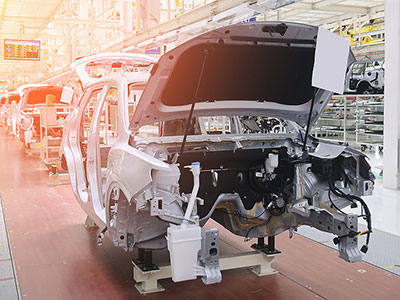There has been a run of strikes or threats of strikes lately with the latest UAW strike impacting the Big 3 automobile manufacturers. If it lasts longer than a few days, there will undoubtedly be a huge impact on the end-to-end supply chain as well as the economy.
The two sides appear to be far apart in labor negotiations with employees asking to work 32 hours and get paid for 40 with a 40% raise while management agreed agreed to a 20% raise so far. As the strike spreads, it will impact additional manufacturing facilities and down-the-line supply chain partners. Unfortunately for the Big 3 automakers, Tesla and foreign automakers with facilities in the U.S. will be ready to pick up the slack. Alternatively, the workers have realistic concerns in that they haven’t been receiving cost of living adjustments with rampant inflation and regulations dictating electric cars which threaten their jobs. On the other hand, the non-union automakers do not have higher wages.
The economy doesn’t take sides. According to the Anderson Economic Group, if 143,000 UAW employees strike for 10 days, it could have greater than a $5 Billion dollar impact.
Supply Chain Impacts
In addition to severe economic impacts, the UAW strike will spread throughout the end-to-end supply chain.
- Suppliers: Suppliers will be impacted as orders are delayed and cancelled.
- Suppliers’ suppliers (multiple supplier tiers): The extended supply chain is vast supporting the auto industry. Impacts will carry down-the-line.
- Mix changes: If consumers need to purchase a car, they might switch to a different brand, changing the product mix of parts for the end-to-end supply chain. This is likely to lead to shortages, overages, and challenges. In essence, the right inventory won’t be in the right place at the right time because the demand has become unpredictable.
- Dealers & service centers: If the strike extends, it will impact dealers, service centers, parts and much more. Again, in this industry, it can spread like wildfire.
- Pricing: With limited availability, prices can go up. Inflation is already 20% higher overall vs 2019, and so additional inflation isn’t desirable as it directly impacts product cost, margins, investment, and consumers.
- Tesla & other car companies: If they can ramp up rapidly (scalability), opportunities abound. On the other hand, for consumers, prices are likely to increase.
- Wage increases: Strikes bring about more strikes. After all, if the railroads, ports, UPS and others didn’t gain a decent outcome due to the threat of strikes, it is doubtful the UAW would strike. As wages increase, price increases get passed on to the consumer and it spreads to other areas of the economy.
Transportation, goods movement, and industries with extended supply chains have such a large economic impact that these issues must be addressed rapidly to mitigate substantial supply chain risks.
Be Proactive
Don’t wait for strikes, down-the-line impacts, unhappy employees, or any of these issues to occur. Instead, take control of your supply chain. Here are a few strategies to deploy:
- Engage employees: One of the best ways to avoid strikes or stay non-union is to engage employees in their work.
- Empower employees: This goes hand-in-hand with engaging employees. Empower employees to make decisions within a reasonable guidepost.
- Prioritize your union negotiations & relationship: Clearly, if you have a union, there is a risk of a strike. How is your relationship? Are you prioritizing this relationship?
- Assess supply chain risk: Detail out the scenarios about how the strike might impact your business, your suppliers, your customers, and/or your extended supply chain.
- Backup sources of supply: No matter if you are related to this industry or not, you should prioritize backup sources of supply.
- Your supply chain network optimization: How should you change your supply chain to be resilient and prepared to scale up/ down etc.?
- SIOP (Sales Inventory Operations Planning): Put a SIOP process in place if you don’t already have one to stay ahead of changing conditions so that you are prepared to pivot, understand your alternatives, and are forward-thinking.
Don’t wait for problems to arise, especially when there are known risks. Stay on top of the risks in your industry, business, and end-to-end supply chain. Set your company up to be resilient, and monitor and adjust as needed.
The Bottom Line
Fingers crossed that a deal will be reached to avoid severe economic impact; however, we don’t want to trade an immediate economic impact for a long-term economic impact that will continue to spread through industry. Be vigilant, involve your executive team and get ahead of potential supply chain risks. If you want to learn more about SIOP, read our book of best practices for designing and implementing SIOP, SIOP (Sales Inventory Operations Planning): Creating Predictable Revenue and EBITDA Growth.
Please contact us with your stories, issues, and ideas on how these types of disruptions impact your company and end-to-end supply chain. And, please keep us in the loop of your situation and how we can help your organization with supply chain optimization, risk mitigation and supporting SIOP programs.
P.S. To get ahead of the curve on where to focus, download our complimentary report, and The Road Ahead: Business, Supply Chain & the World Order.



